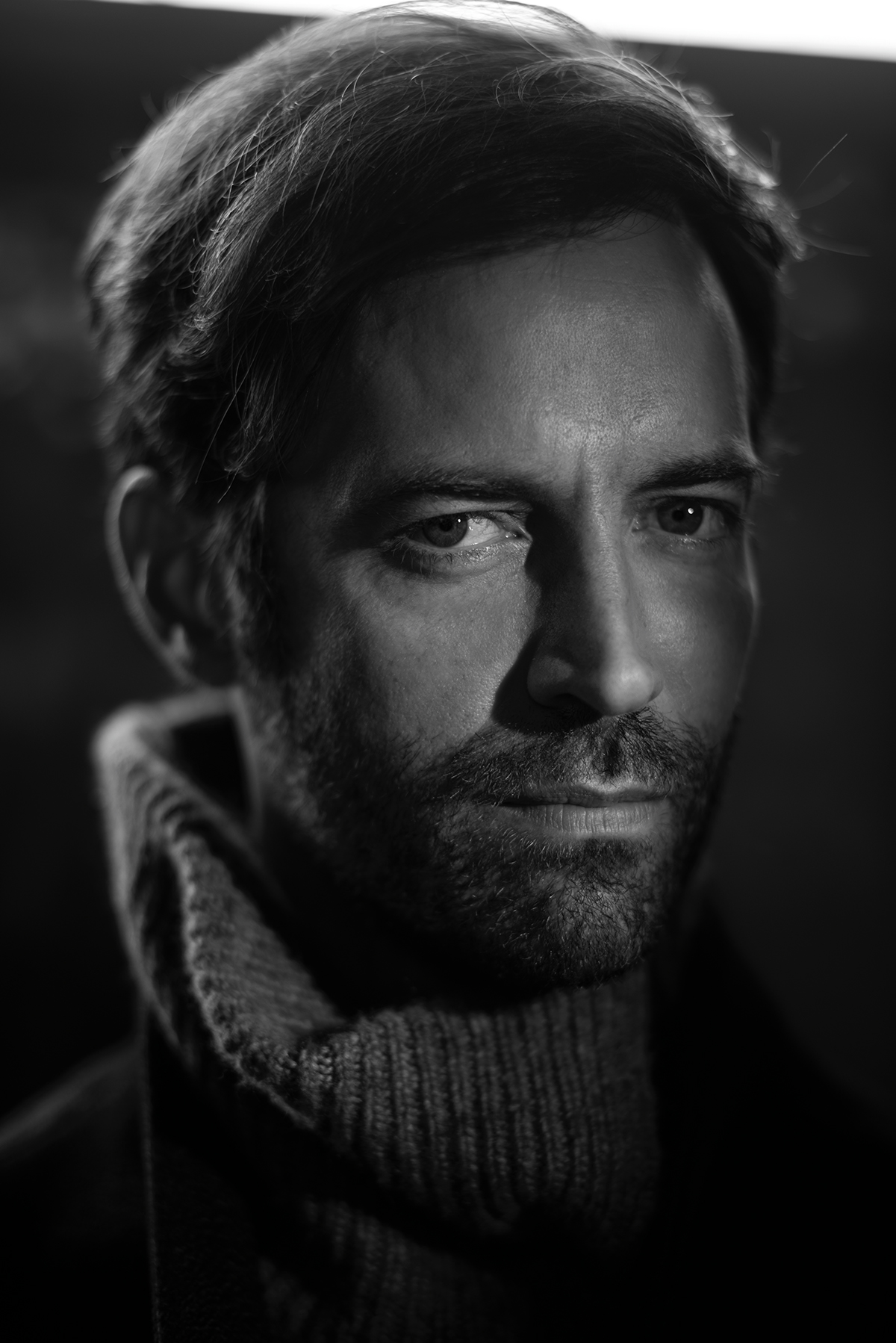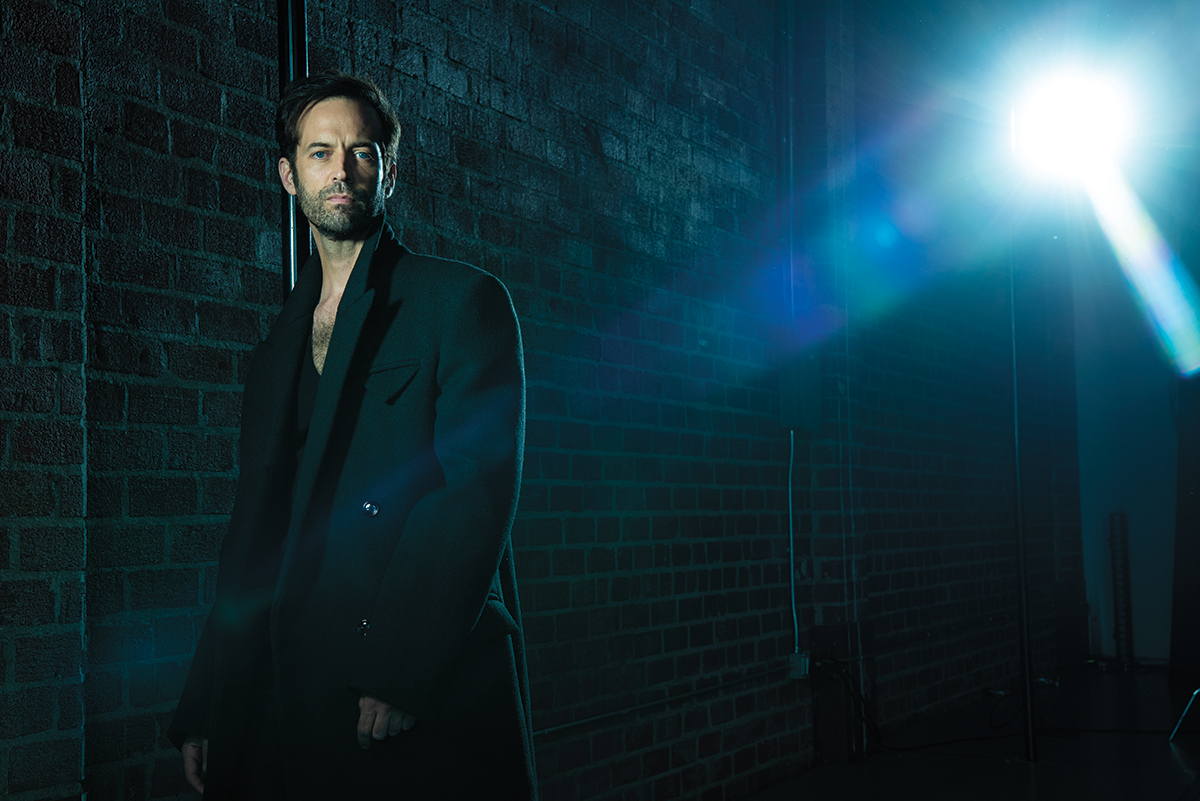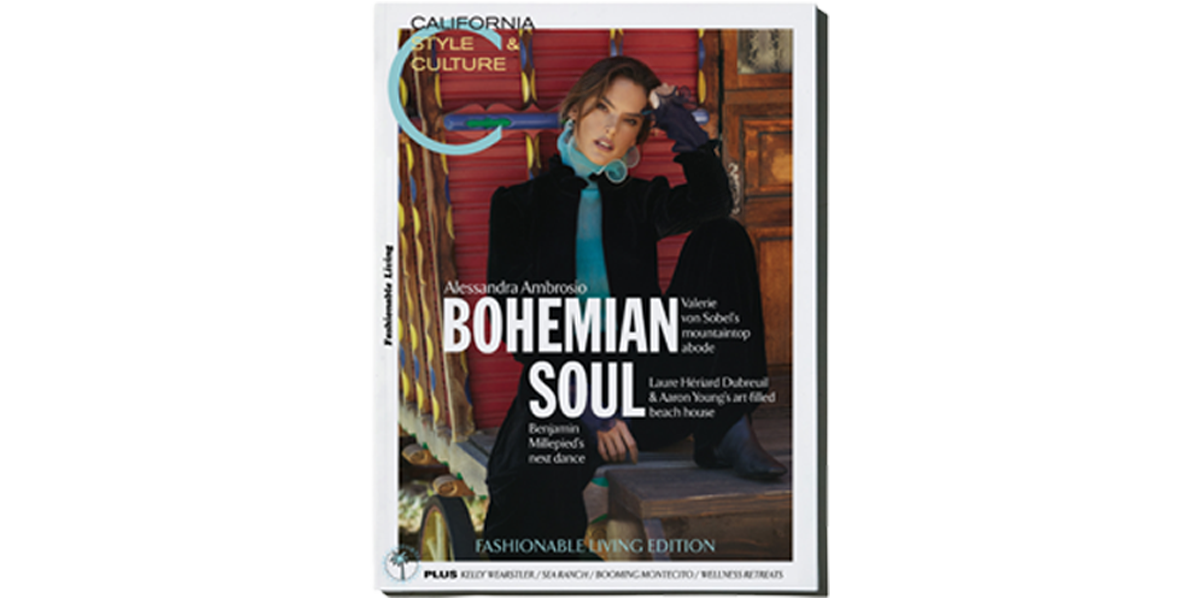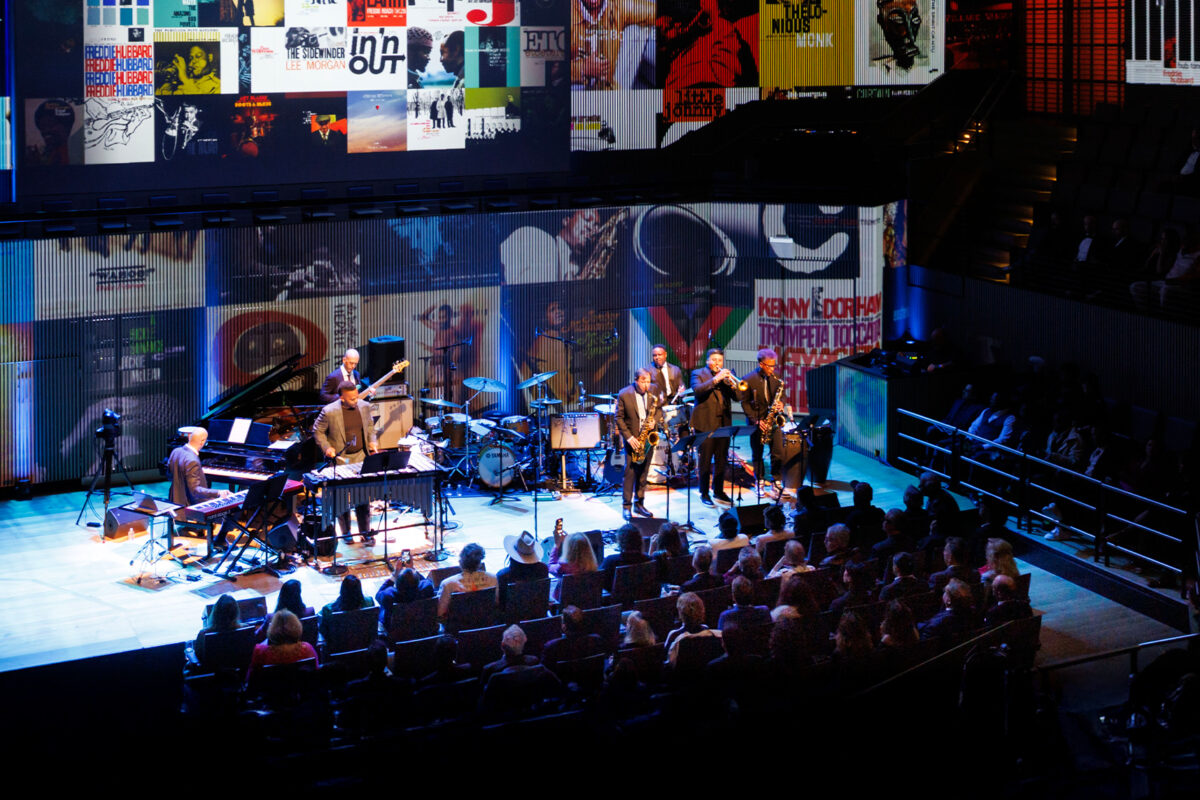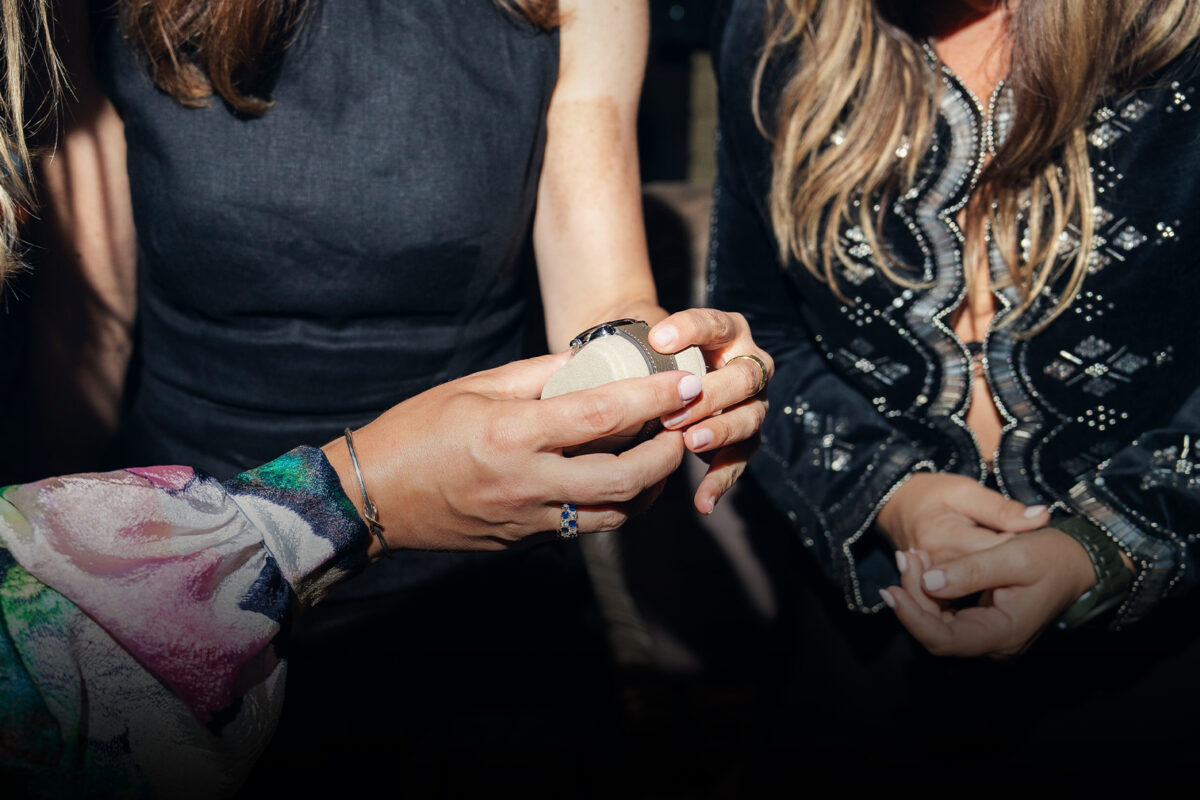As the Los Angeles Dance Project gets ready to turn 10, we catch up with its founder about his new film and the future of the company
Words by KELSEY McKINNON
Photography by FRANK OCKENFELS
Fashion Direction by CHRISTOPHER CAMPBELL
At a certain point, elite performers often find themselves driven to pass on their knowledge to help shape the next generation: A musician becomes a composer, an actor becomes a director, an athlete becomes a coach or, in the case of Benjamin Millepied, a dancer becomes a choreographer. Nearly a decade ago Millepied, New York City Ballet’s French-born principal, hung up his tights and headed west with his fiancé (now his wife of nine years) Natalie Portman — whom he famously met on the set of Black Swan, which he choreographed and starred in — and started his modern dance company, Los Angeles Dance Project (LADP).
Operating out of a Downtown studio and performing at venues across the city, Millepied has become a tireless champion for his underappreciated art form. In the years that ensued, he’s joined the rarefied ranks of Los Angeles’ cultural heavyweights, including LACMA’s Michael Govan, the L.A. Philharmonic’s Gustavo Dudamel and the Hammer Museum’s Ann Philbin, who collectively generate the creative currents that pulse through the city. During COVID, while LADP productions were placed on hold, Millepied sashayed across artistic disciplines entirely, directing his first feature film, a dreamlike adaptation of the famous opera Carmen. The film will be released next year, after LADP returns to the stage this winter with Millepied’s highly anticipated rendition of Romeo and Juliet in Paris.
DRIES VAN NOTEN wool jacket, $2,750, shirt, $550, and pants, $620. GOLDEN GOOSE leather sneakers, $495.
We caught up with the multidisciplinary creative and father of two to talk about his time filming Down Under, the future of LADP, his untraditional approach and his affinity for unexplored performance spaces in Los Angeles.
“Staging is a very big component to directing. Great directors in my opinion are choreographers”
Benjamin Millepied
C Magazine: It’s been almost 10 years since you moved to L.A. and started LADP. Take us back to where your mind was in those early years.
Benjamin Millepied: There was very much an attraction of building something in a new place. I knew it was going to be difficult and I was attracted by L.A. L.A. was mysterious to me. It hasn’t lost any of that. It was fun to build something from scratch here, and we’ve grown the support. I think the company is here to stay.
C: You’ve spent so much of your career in New York and Paris. What’s special about L.A.?
BM: There’s a huge amount of companies in New York and Paris. I like being away. I like having this freedom. The artists and the city continue to interest me, and it feels like a great place to try and continue to support them.
C: Where are your favorite places in L.A. that the company has performed?
BM: There are a ton of places that are unexplored. I think the beauty of L.A. is really to try to do more, and to not necessarily use the theaters. The Ace Hotel was great, the LA Phil was great and I love our space, it’s a very simple dance space. But you know, why not perform at the train station, Schindler House, Huntington Library? That’s something that we are going to look at more and more: places that are not necessarily theaters.
C: You’ve done a number of collaborations with artists and galleries like Doug Aitken and Hauser & Wirth. How did those come about?
BM: I reach out to them. It’s my own personal interest of culture and painting. I think so many of these artists have interesting responses to our times, and I love the dialogue. And I always try to push people to collaborate.
C: Do you collect contemporary art, too?
BM: Rarely, you know, rarely, but yeah.
ERMENEGILDO ZEGNA XXX wool coat, $4,964, and cashmere silk turtleneck, $4,964.
C: What are some of the big challenges you’ve faced so far?
BM: You’re fighting with screens. The most common thing people talk about is what TV show they are watching. I personally want to have as much cultural experience as possible. What you have to do is just offer it. It’s the people who come that count, it’s not the people who don’t come. It’s a mission. It’s very important that we continue the success — not only for the life of the arts and the artists, but really the art form of dance being a response to this moment and the idea of creating an archive.
C: What’s the plan going forward?
BM: Well, I certainly hope we can get back to indoor performances and perform a lot more. LADP was never a traditional model. I’m very much interested in having lengthy periods of time where the company rotates with different curators than myself, to have different points of view. I’m thinking about a different model going forward that is more encompassing and not traditional in ways that fit more with current times.
C: You spent much of the past year shooting Carmen in Australia. What was that experience like?
BM: It was really amazing. We shot Australia for Mexico and L.A. between the desert landscape and the cityscape. The nature of my movie is between reality and a dream, and Australia really worked very well. You wouldn’t know you’re not in L.A.
C: How did you prepare to make a film?
BM: I think that had I not run anything before, being a film director would have been more difficult. But having managed people before was a plus. I kept joking that even though I have made a lot of little films, I felt like this film was film school for me.
C: That still sounds daunting.
BM: Well, I have been taking photographs as a hobby for a long time. When you come to film, that’s a very important component: how to create a frame. And then of course how people interact and move in it. So staging is a very big component to directing. And staging is having an understanding of how people interact and move in a space in relation to the camera, so that is very much choreography. Great directors in my opinion are choreographers.
“I never play the cult figure that you find a lot in dance companies. I tell the dancers: ‘You can trust yourselves’ ”
Benjamin Millepied
C: How would you characterize your leadership style in general?
BM: I’ve had to be a leader for a long time, between having the company here for [nearly] 10 years, then I have my experience with the Paris Opera [director of dance at the Paris Opera Ballet from 2013 to 2016]. I never play the kind of cult figure that you find a lot in dance companies. I tell the dancers, “I already think you are great because you were hired.” I just let them sink or swim. You can trust yourselves. You don’t need my constant approval. This need is often insecurity, and so I think with dancers it’s really powerful for them to gain confidence as soon as possible.
BOTTEGA VENETA coat, sweater and pants.
C: And on a film set?
BM: In film it’s a collaborative process. You have to guide with your vision and find people who get your vision, but the whole point is to have people pose things you didn’t think of yourself, and giving freedom to your creative team.
C: Do you think you’ll do another film someday?
BM: Truly, I can’t wait to get going on another picture. I’m naturally drawn to unconventional films. I want to be able to create something that feels really unique.
C: So something unexpected…
BM: Yeah. Or having a very strong musical component.
C: Can I ask you something off topic? How do you translate your last name in English?
BM: [Chuckles] It means “a thousand feet.” There are different meanings. I think it has something to do with vineyards, I’m from Bourdeaux.
C: Seems like a very apropos name for a dancer…or someone who never stops moving.
BM: Yes.
C: So does that mean you are still partial to French wines?
BM: [Chuckles] No, not at all. Not at all. I drink lots of American wines — organic American wine.
Fashion assistant JOHN DONAHUE.
Grooming by MICHELLE HARVEY at Opus Beauty using Boy De Chanel and Kevin Murphy.
Feature image: ERMENEGILDO ZEGNA XXX felt suit, $5,188, and shirt, $685.
This story originally appeared in the Fashionable Living 2021 issue of C Magazine.
Discover more CULTURE news.


